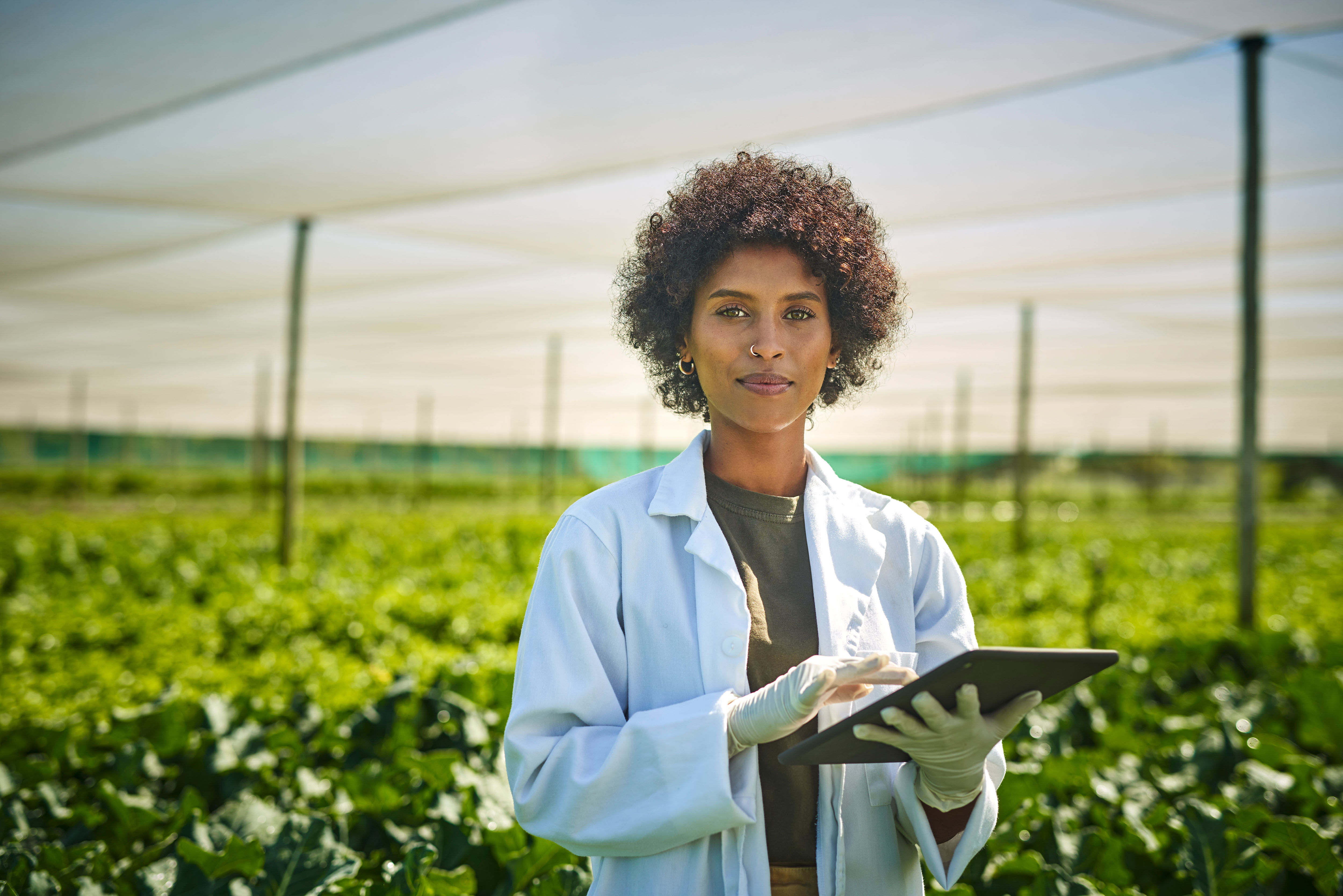Is it possible to improve both transparency and sustainability in the production and supply chain, while saving time and energy, and thereby increasing productivity? The answer in greenhouses and agriculture is a resounding yes. It’s all made possible by combining smart sensors and tracking technologies with Internet of Things (IoT) platforms, the cloud, and big data. These technologies can help farmers optimize many logistical processes, including packaging and shipping, for even greater speed and efficiency.
Digital technologies offer unlimited possibilities in the field of agriculture – from autonomous harvesters to drones as flying helpers [1]. But let’s take a closer look and see what even small sensors and the right ecosystem are capable of. Smart sensors in IoT devices, for example, can gather information on soil conditions and humidity, and send it to a central platform in real-time. Is it raining or is the soil too dry? Farmers can use this information to efficiently activate or restrict their systems, allowing them to better control water consumption. Let’s take a closer look at the background technologies helping boost logistics.
Smart sensors for smarter and more sustainable agriculture
Smart sensors collect data directly at measuring points. For example, smart agrometeorological devices can have three temperature sensors for measuring the temperature of the earth, soil, and air. This enables farmers to monitor both the consumption and condition of water and energy in real time, as each smart device communicates through a network with a central platform or application.
In combination with connectivity solutions such as a narrowband network, all data is transferred directly to a mobile app. An integrated battery in devices supported by an intelligent control system guarantees a long service life with minimal maintenance and autonomous operation in rural areas. Farmers no longer have to go to the measuring devices to read the data.
Driven by future-proof technologies such as the IoT and RTLS
How does this sound: Up to 30% higher efficiency in various processes, better work planning, less and shorter unplanned downtime, balanced workload distribution, reduced operation and maintenance costs, and a safer work environment? If that sounds good, you can do it all with the comprehensive industrial digital transformation (DX) ecosystem known as a Real-Time Locating System (RTLS). It provides a complete digital overview of industrial manufacturing and production logistics operations – including identification, location tracking and sensor technologies, M2M connections, and a state-of-the-art big data platform.
All of these features and functions come together in specially designed hardware and software that is both simple and efficient to operate. The focus is always on ensuring ease of use regardless of the complexity of the devices it connects and the information it collects. Adding new IoT devices is quick and easy using a unique QR code on each product, while the products in the application are autonomously battery-operated and have a long service life with minimal maintenance needs. The sensor technology used includes RFID tags and readers (RFID = radio-frequency identification): An RFID system consists of a tiny radio transponder, a radio receiver, and a transmitter, and uses electromagnetic fields to automatically identify and track tags attached to objects.
Tried and tested and used by agricultural companies
In the case of an agricultural seed producer, using a system like that enabled the company to reduce its loading times by 40%. The challenge was to ensure precise tracking of 3,000 bigpack positions in 5 warehouses covering about 30,000 square meters with indirect position monitoring. The challenge was met by using the real-time position of forklift trucks to determine the position of the bigpacks moved by the vehicles. While RFID tags were attached to the bigpacks, RFID readers were installed on the forklift trucks, ultimately leading to impressive time savings in loading times.
Any agricultural business that wants to speed up packing and shipping should take a look at the real-life case study of a postal company: With the support of state-of-the-art digital tools and experts from their local Telekom Business representatives in Hungary, this company developed a smart indoor parcel tracking solution, which allowed them to automate manual parcel logistics processes. Each package in the warehouse (which has more than 1,200 parcels) is tagged with an LED light and sound alert to help identify it, which can be activated with the help of the application developed as part of the project. Impressive results: Average search time was cut from approx. 3 minutes to under 30 seconds.
The ideal partner for smart agriculture
Who wouldn’t want to be faster than a postal service? Smart metering and IoT ecosystems from Telekom Business Europe make it possible. The solutions are modular, and you can upgrade several different types of sensors depending on user needs. What’s more, they have their own power supply with wireless data transmission via a verified Telekom network. Ultimately, however, it’s not just about speed but about security, holistic optimization effects and contributing to increasing overall business performance. This also has a positive impact on sustainable corporate activity in addition to purely economic benefits such as saving time, costs, and energy.
Sources:
1. Smart Farming: How 5G powers digitization of agriculture. Telekom.
